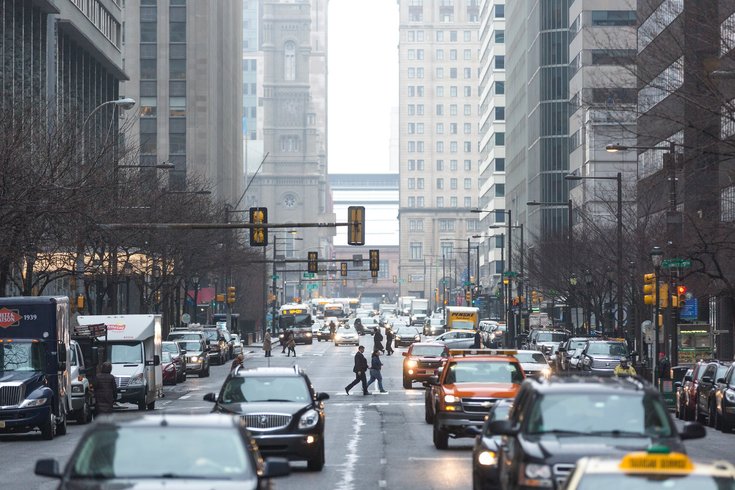
October 10, 2023
 Thom Carroll/For PhillyVoice
Thom Carroll/For PhillyVoice
Traffic deaths rose slightly last year while total vehicle crashes fell, according to Philadelphia's 2023 Vision Zero report.
Vehicle crashes resulting in death or serious injury fell in Philadelphia last year, though traffic deaths rose slightly, according to the latest progress report on Philadelphia's Vision Zero commitment to improve road safety.
The annual report, released on Tuesday, found that the number of fatal crashes and crashes involving a serious injury fell by 34% last year, while crashes involving less severe injuries dropped by 20%. But traffic fatalities rose to 124 last year, up from 123 in 2021, though the number is still down from the 152 traffic deaths in 2020. That was the deadliest year for Philadelphia's roadways since 1990, when there were 169 fatalities.
Black and Hispanic residents have been disproportionately impacted by traffic fatalities, the report says, with Black Philadelphians making up half of all traffic deaths in the city between 2020 and 2022. During the same time period, traffic deaths among Hispanic Philadelphians increased by 42%, according to the report. The report also found that five children are hit by a vehicle every week while walking in Philadelphia.
In 2017, Mayor Jim Kenney released the Vision Zero plan to eliminate traffic fatalities by 2030. The city has improved roadways, expanded bike infrastructure and reduced speeding on dangerous corridors like Roosevelt Boulevard and Lincoln Drive.
"Vision Zero has been a cornerstone of my administration," Kenney said about the report. "The city and our partners have made important progress in... reducing traffic deaths and crashes. All Philadelphians deserve to travel safely."
Philly's rate of traffic fatalities — 7.4 per 100,000 residents — is much higher than rates in other East Coast cities like New York City and Boston. The city's traffic fatality rate is closer to that of car-dependent cities like Los Angeles.
So far this year, Philadelphia has recorded 102 traffic fatalities, including 45 pedestrians, 11 motorcyclists, eight bicyclists and one e-scooter rider, according to data tracked by the Bicycle Coalition of Greater Philadelphia.
The Vision Zero report shows that pedestrians are more likely to die in traffic crashes than people traveling via bike, motorcycle or automobile. Traffic deaths among walkers and bikers are rising, according to the report.
Over the past few years, the city has funded repaving and roadway improvements for the High Injury Network, a collection of dangerous Philly streets. These include projects along Chestnut Street and Cobbs Creek Parkway in West Philadelphia, Washington Avenue in South Philadelphia and Lehigh Avenue in Kensington and Port Richmond.
In addition to roadway improvements meant to discourage speeding, the city has implemented a 25 mph speed limit on many corridors and plans to reduce the speed limit on some residential streets to 20 mph.
The city also is adding protected bike lanes. The report says installing these bike lanes results in 17% fewer crashes and twice as many bike riders. The city aims to add separated bike lines to 40 miles of streets by 2025.
The report mentions the automated speed enforcement cameras placed on Roosevelt Boulevard. Since 2020, speeding violations on Roosevelt Boulevard have dropped by more than 93%, and there have been 50% fewer crashes involving pedestrians.
Some Pennsylvania lawmakers are looking to make the speed camera program permanent and potentially expand it to other major roadways, including Cobbs Creek, Henry Avenue and Broad Street. After passing in the House of Representatives, the bill stalled in the state Senate in late June.